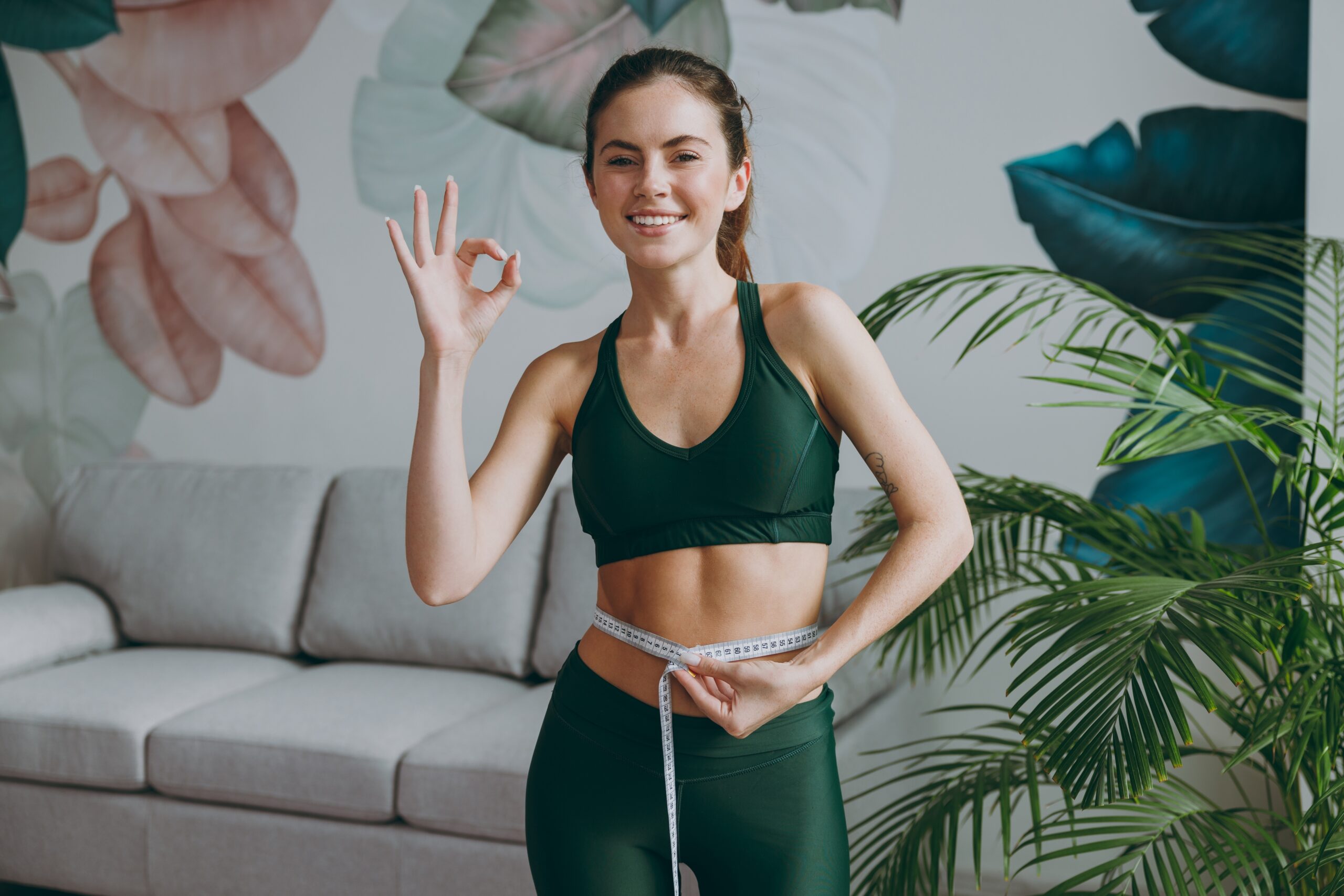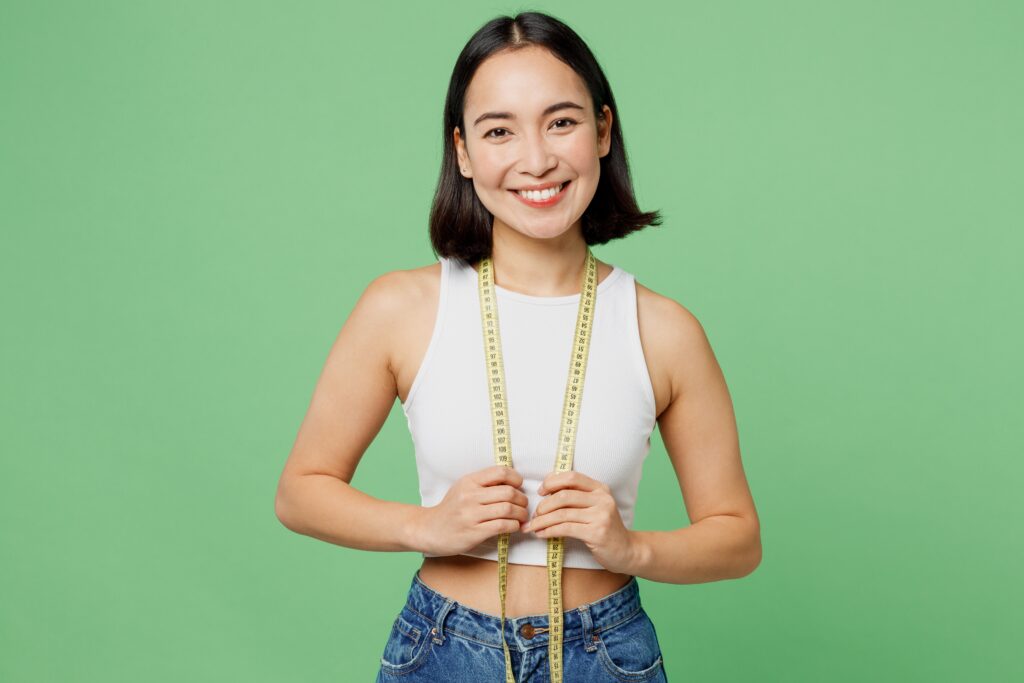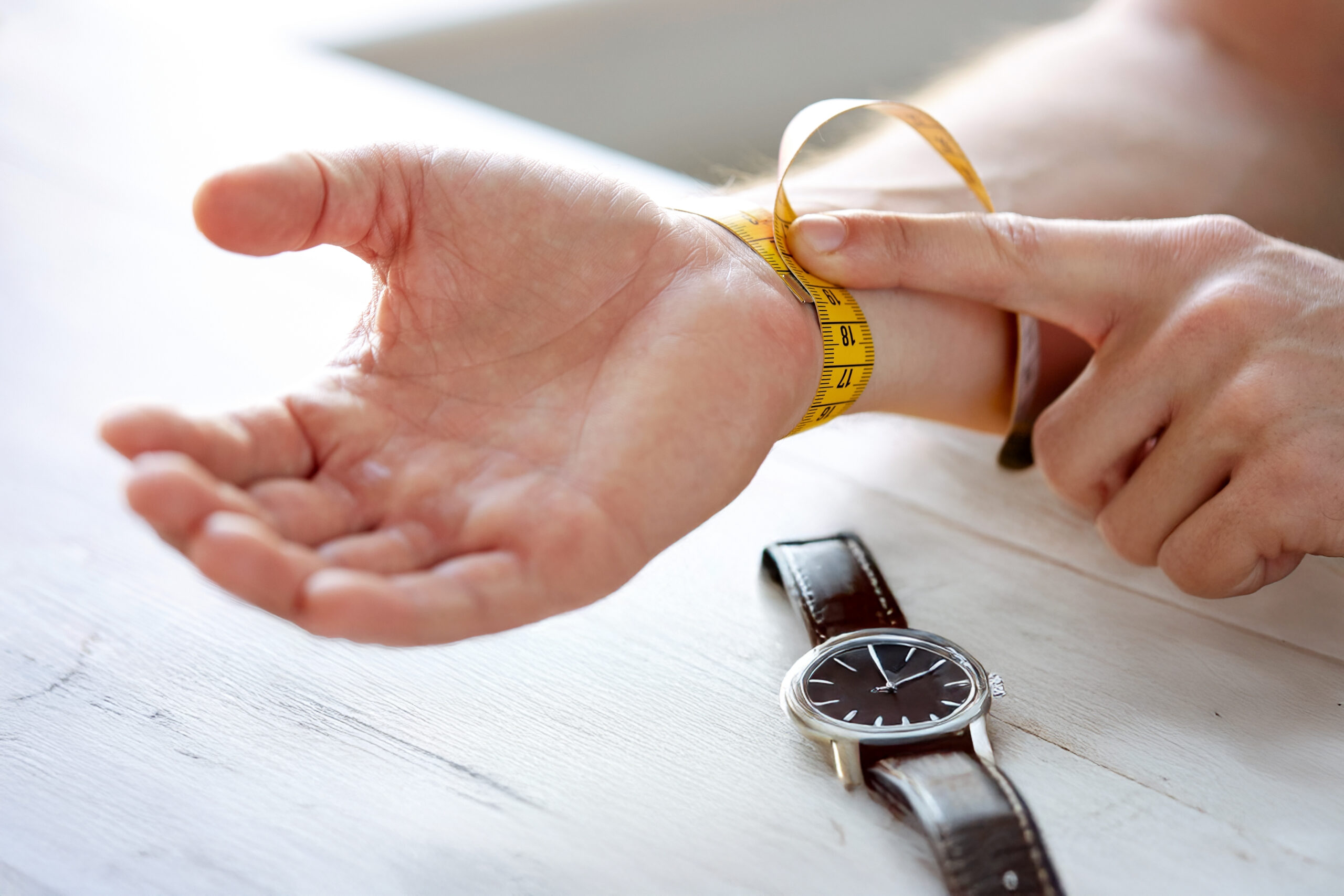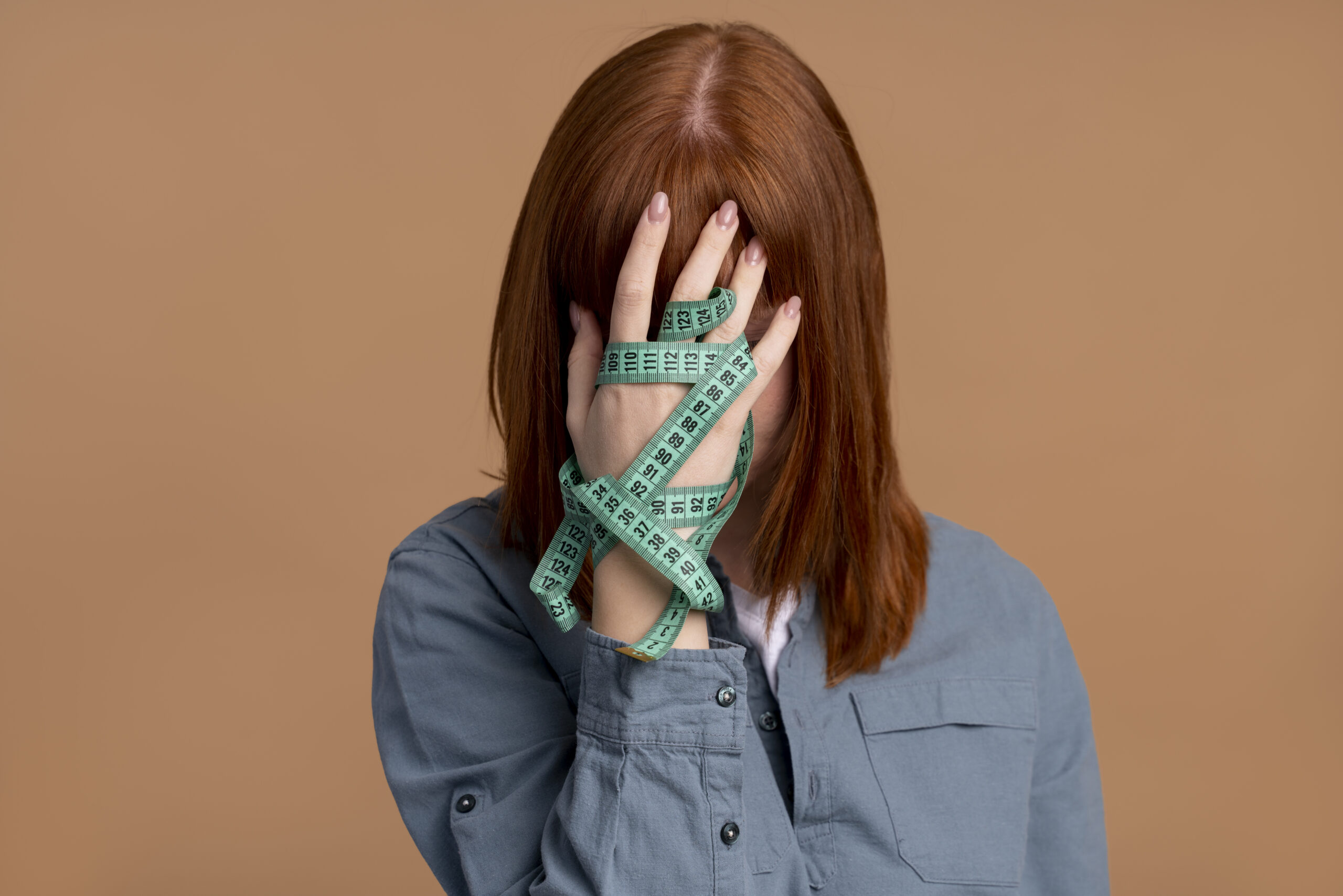
Size matters. Regardless of what you might be thinking right now, choosing the correct size when shopping online or sewing your own garments, can impact your entire appearance and comfort.
When we wear clothes that are too tight, not because of their design, but because of the size we’ve selected, we feel uncomfortable. On the other hand, going for clothes that are too loose, you might end up looking sloppy.
So, yes, size matters deeply and it’s a truth that gets overlooked all too often.
By knowing your body measurements, you can make sure your clothes fit you perfectly, making a world of difference in how you feel and look.
With the help of this guide, you can learn how to measure yourself at home accurately and finally order the right size for any garment.
Discover:
Body Measurements Essential Tips
Before we dive deep into the body measurement guide, it’s best we lay down some ground rules or better said, helpful tips.
- Use a dressmaker’s measuring tape.
It’s important to use a correctly marked measuring instrument that is also easy to handle. The best option is a classic measuring tape with markings in both inches and centimeters for fast conversion.

If you don’t have this type of measuring tape, you could use a piece of string, mark the length, and measure it against a long ruler or a retractable tape.
 If you don’t have this type of measuring tape, you could use a piece of string, mark the length, and measure it against a long ruler or a retractable tape.
If you don’t have this type of measuring tape, you could use a piece of string, mark the length, and measure it against a long ruler or a retractable tape.
- Wear lightweight clothes.
Generally speaking, getting measured in your undergarments or dressed in fitted clothing is ideal. They will help define your body shape without adding bulk and obtain accurate body measurements.
- Keep still during the measurement process.
Avoid moving or taking deep breaths during the measurement process, as these can impact the final result.
- Stand up straight.
Throughout the measuring process, make sure your body is in the correct position. Keep your legs and back straight, and don’t forget to breathe.
For a comfortable fit, the measuring tape should fit snugly against your body without being overly tight or loose.

How To Accurately Measure Yourself With A Tape
In the age of smart gadgets, the dressmaker’s measuring tape remains a trusted partner in identifying your correct size. However, using technology in this endeavor is another convenient method to measure your body, but more on that later.
How To Measure Your Bust
To accurately identify your bust size, you must measure the widest part of your chest.
Start the measuring process by wrapping the tape over your chest, going along the nipple line.

You might notice that in different-size charts, there is an underbust (also called ribcage) measurement. Should you need to obtain it, place the tape directly underneath your breast.
 You might notice that in different-size charts, there is an underbust (also called ribcage) measurement. Should you need to obtain it, place the tape directly underneath your breast.
You might notice that in different-size charts, there is an underbust (also called ribcage) measurement. Should you need to obtain it, place the tape directly underneath your breast.
How To Measure Your Waist
When measuring your waist, the most important question you need to answer is: Where does one measure the waist?
You’ve read that right.
People tend to measure the waist in different places and that can impact the process and ultimately, the results.
How exactly?
Well, when developing their size charts, different brands use different measuring standards as benchmarks. As a side note, ESENCA Sizing can measure your waist from all points, making the process simple and stress-free, not to mention accurate.
That said, it’s important to distinguish between two rather popular terms, your natural waist and your lower waist, as these are two different measurements.
The natural waist is the smallest point of your waist, usually located one or two inches above your belly button.
The lower waist, on the other hand, is the widest part of your waist, usually found at the belly button or right under it.

To correctly identify your natural waist, stand up straight, bend from right to left, and check where your body creases.
 To correctly identify your natural waist, stand up straight, bend from right to left, and check where your body creases.
To correctly identify your natural waist, stand up straight, bend from right to left, and check where your body creases.
How To Measure Your Hips
Measuring the hips is a pretty tricky process, mostly because people tend to mistakenly measure the hip bones. Unfortunately, that is not how you should do it.
To obtain correct body measurements, measure across your bottom at its widest point, generally just above the crotch line.
Remember to maintain the correct position throughout this process, which is standing up, with your feet straight below and not spread apart.
To ensure an accurate, relaxed fit, sit down and stand up while taking your hip measurements.
How To Measure Your Arms And Legs
When shopping around for suits, correctly measuring your arms and legs will make the difference between buying garments that actually fit your body shape and allow you to move without feeling uncomfortable.
To measure your arm, wrap the measuring tape around the bicep, the thickest part of your upper arm.
As for your legs area, here there are two measurements you need to obtain, the upper leg and the calf.
Both the upper leg and the calve are measured similarly to your arms, meaning wrapping the tape around the widest parts of these areas.
How To Measure Your Feet
You don’t need to be a magician to turn a pair of shoes from a blessing to a curse. You just have to order the wrong size that doesn’t slightly fit.
To make sure that never happens again, grab a piece of paper, a pen, and a ruler or measuring tape.
Place your foot on the piece of paper, trace the outline of your foot, and measure the distance from the longest toe to the heel. Once you have the measurement, you can compare the results with the corresponding size in a brand chart.

Make sure that you place the paper on a flat paper and measure both your feet, as they might be slightly different.
 Make sure that you place the paper on a flat paper and measure both your feet, as they might be slightly different.
Make sure that you place the paper on a flat paper and measure both your feet, as they might be slightly different.
Other Body Measurements
- How To Measure Your Head
Place the measuring tape across your forehead and wrap it around your head. Make sure to keep it above your ears. When comparing it against different sizing charts, if you find yourself between sizes, it’s best to go for a size up.
- How To Measure Your Inseam
This particular measurement is a bit delicate, as it refers to the distance from your crotch to the bottom of your leg.
However, it is relevant to point out that the correct measurement should be taken perpendicular to the floor, not along the inside of the leg.
In this case, it would be helpful to have someone else do the actual measuring, as once you bend over to check the tape, you could get the measurement wrong.
- How To Measure Your Sleeve Length
There is nothing more annoying than a short long sleeve. To make sure that doesn’t happen to you, measure the distance between your shoulder seam and where your ideal sleeve cuff would be. For this measurement, having someone to help you would be beneficial.

Try to measure the sleeve in a straight line along the outside or with the lower part of your arm parallel to the floor. This way, you can be sure that your sleeves are never too short.
 Try to measure the sleeve in a straight line along the outside or with the lower part of your arm parallel to the floor. This way, you can be sure that your sleeves are never too short.
Try to measure the sleeve in a straight line along the outside or with the lower part of your arm parallel to the floor. This way, you can be sure that your sleeves are never too short.
- How To Measure Your Shoulders
Shoulders are measured from one tip to another. Since it is impossible to take this measurement on your own, make sure to have someone assist you. Also, you can always choose a jacket that has the correct fitting and measure the distance between the shoulder seams.

When measuring, make sure the measuring tape is parallel to the floor.
 When measuring, make sure the measuring tape is parallel to the floor.
When measuring, make sure the measuring tape is parallel to the floor.
- How To Measure Your Pants Length
Place the tape from your waist down to where you would like the hem of your pants to be. This is one of the body measurements that requires help because ideally, the tape should remain straight for you to get the accurate sizing, and bending over to check will prevent this from happening.
- How To Measure Your Cuff
To get an idea of how loose you want your pants to be, you need to wrap the tape around your ankle. Another idea would be to take one of your favorite pairs of pants and measure the cuff along the hem from side to side.
Keep in Mind:
In all manual measurement processes, the measuring tape can be placed at different points, and this detail can impact the result. That is why it is worth mentioning that the ESENCA Sizing measurement solution can provide you with all the sizing insights you require to adequately identify the correct size based on different sizing charts.

How Esenca Sizing Can Help
As mentioned earlier, technology has made an impact in the measuring department as well, bringing forward several tools for shoppers to use to quickly identify the correct sizing.
Esenca Sizing is one trustworthy example. This solution brings forward hundreds of body measurements in under 30 seconds. Not only is the sizing data impressively precise, allowing shoppers to choose the correct size every single time, but the actual measuring process is straightforward and easy to follow. With dedicated body, hand, and feet modules, online brands can ensure their customers can obtain accurate information, ultimately reducing returns, boosting sales, and improving customer satisfaction.
With only two photos taken with the user’s smartphone camera, connected to Esenca Sizing, shoppers can quickly identify their exact measurements, translated in each brand’s size charts.
And everyone in the eCommerce world knows that when shoppers are happy, brands are too.
For more information about how Esenca Sizing can impact your business, make sure to visit our website.
Conclusion
Learning how to measure yourself at home might not be a priority, but it’s a game-changer.
You get to a point, a package that proves to be a nightmare to return, a pair of shoes that look gorgeous but are impossible to walk in, or pants that keep you standing, when you realize that knowing your size is an investment in your comfort.
There’s really nothing too difficult in learning how to master a measuring tape. It’s simply a matter of proper positioning and finding the right measuring tape (or online body sizing solution).
Key Takeaways
- Learning how to measure yourself at home allows you to invest in garments that feel and look great on your body.
- The correct instrument to obtain body measurement is the standard dressmaker’s measuring tape, preferably with both centimeter and inch markings.
- Online body sizing solutions can provide shoppers with accurate measurements, helping them identify the right fitting garments or shoes.
FAQ
- Why is it important to know my body measurements?
Knowing your correct body measurements allows you to purchase clothes, accessories, or shoes that fit properly, ensuring comfortable wear and improving your appearance. It also reduces the time you lose returning different products.
- Do I need any special equipment to measure myself?
Measuring yourself at home can be easily done with a standard dressmaker’s measuring tape. While this is a popular and effective method of obtaining correct body measurements, you can also use different online body sizing solutions.
- How often should I re-measure myself?
The frequency of re-measuring your body depends on your specific needs and lifestyle. If you’re actively managing your weight, health, or fitness, it’s advisable to measure yourself more often. For example, those on a diet, regular gym-goers, or individuals monitoring health conditions may benefit from frequent measurements.
Additionally, if you notice significant fluctuations in your weight, it’s a good idea to re-measure.

Consider measuring both in the morning and evening to get a more accurate picture of your body’s daily variations.
 Consider measuring both in the morning and evening to get a more accurate picture of your body’s daily variations.
Consider measuring both in the morning and evening to get a more accurate picture of your body’s daily variations.
- What should I do if my measurements fall between two sizes?
If this situation arises and you do find yourself between sizes, the best way to go about it would be to size up. This would give you a comfortable fit while also following your body shape. However, it’s never a sure thing. That’s why the Esenca Sizing solution, with its on-point measuring recommendations, makes all the difference.
- What are some common mistakes people make when measuring themselves?
Even though the measuring process is rather straightforward, there are a few mistakes that people can make. These include not standing in the correct position, not measuring different body parts as recommended in the instructions, or measuring in different points than the ones specified in the brand’s size chart.





